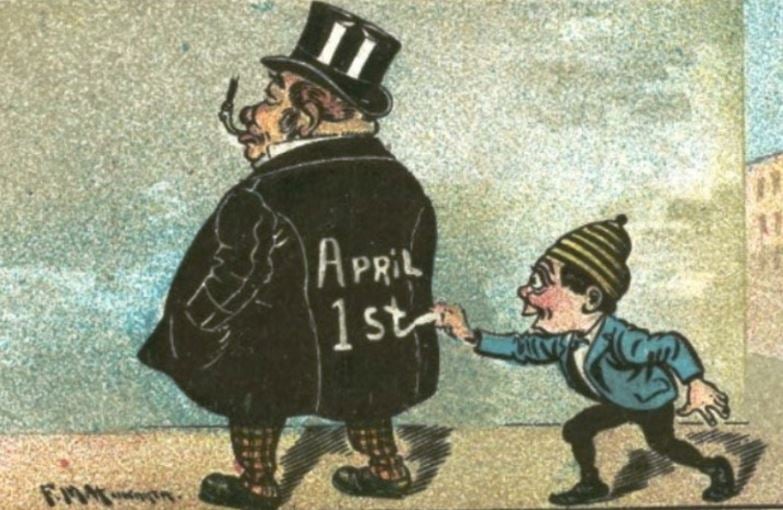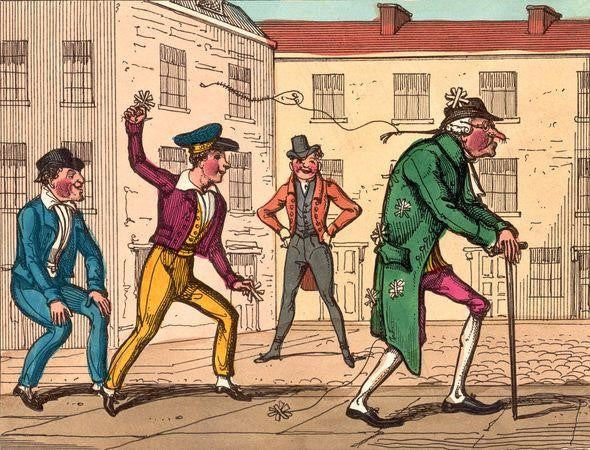It's the perfect excuse to prank your friends, family, colleagues, and even your significant other. The day is all about tricking the unsuspecting and convincing them of the most absurd things.
So, if you love pranks, today’s your day—though, if you’re not into the silliness, you’ll have to deal with it.
But where did this tradition come from, and how do Europeans celebrate this day of fun and foolishness? Here’s everything you need to know:
What is April Fools' Day?
This day is marked by practical jokes, pranks, and hoaxes, with pranksters usually shouting "April Fools!" at their victims. This custom has been around for centuries.
Where did it come from?
The origins of April Fools' Day are debated. Many trace the tradition back to medieval France, where 25 March used to mark the start of the new year. In 1564, when the Julian calendar was reformed and the Gregorian calendar adopted, New Year's Day was moved to 1 January. Those who continued celebrating on 1 April were ridiculed and called "April Fools."
Historians have also linked the day to spring festivals like the medieval Feast of Fools, where a "Lord of Misrule" parodied religious rituals, and Hilaria (from the Latin "joyful"), an ancient Roman celebration honoring the goddess Cybele. These events often involved dressing up in costumes and making fun of others, allowing commoners to mock the nobility without consequences.
Some suggest that India’s Holi festival, which happens in March and celebrates the arrival of spring, might be a precursor. The festival includes food, music, dancing, and the throwing of colored powder.
What is the earliest reference to April Fools' Day?
The first definitive reference to April Fools’ Day appears in a 1561 Flemish comic poem by Eduard de Dene. It describes a nobleman sending his servant on pointless errands, leading to the term "fool’s errand."
How is April Fools' Day celebrated in Europe?
Different countries have their own unique ways of pranking their victims:
-
France, Belgium, Italy, and French-speaking Switzerland: People tape paper fish to others' backs and yell "Poisson d’Avril" ("April fish") or "Pesce d’Aprile." The fish likely symbolizes young animals, easily caught.
-
England: Pranks are only allowed until noon. After that, anyone playing a joke is considered the "April fool."
-
Scotland: The celebrations last two days. On the first day, people play pranks, and on the second, known as "Tailie Day," they attach paper tails to each other's backs.
-
Ireland: The tradition involves sending someone on a "fool’s errand." The victim is sent to deliver a letter that instructs them to take it to someone else, and the cycle continues until the letter is finally revealed to say, "Send the fool to someone else."
-
Netherlands: People may catapult or slingshot herring at neighbors, shouting "Haringgek" ("herring fool").
-
Germany: A common prank is the "Aprilscherz," where people tell outlandish, made-up stories to fool others.
-
Greece: Tricking someone on this day is said to bring the prankster good luck for the year.
-
Poland: A warning is often issued: "Prima Aprilis, uważaj, bo się pomylisz!" ("April Fools' Day, be careful—you could be wrong!").
-
Spain and Portugal: They celebrate on different days. In Portugal, pranks occur the Sunday and Monday before Lent, with flour being thrown at unsuspecting people. In Spain, pranks take place on 28 December during Holy Innocents’ Day.
April Fools' Day Pranks in the Media
Media outlets often participate in the prank tradition by running fake stories. The UK is particularly good at this.
-
In 1698, the British press fooled people by announcing the "washing of the lions" at the Tower of London, a non-existent ceremony.
-
In 1957, the BBC aired a fake report about Swiss farmers harvesting spaghetti from trees, fooling many viewers.
-
In 1992, NPR ran a segment where former President Richard Nixon supposedly announced his bid for re-election, which turned out to be a hoax.
-
Companies like Virgin Atlantic and Marmite have also joined in with outrageous fake product announcements.

